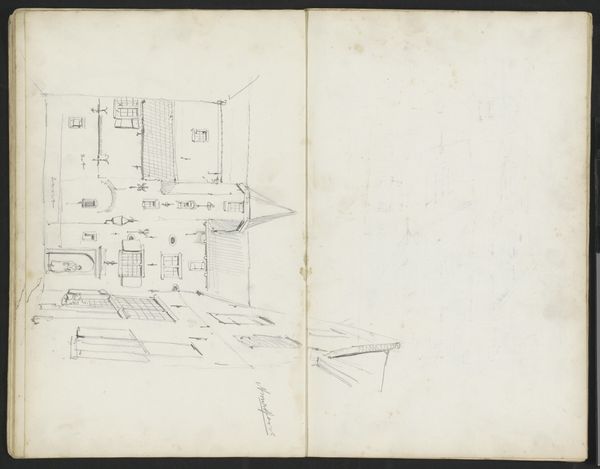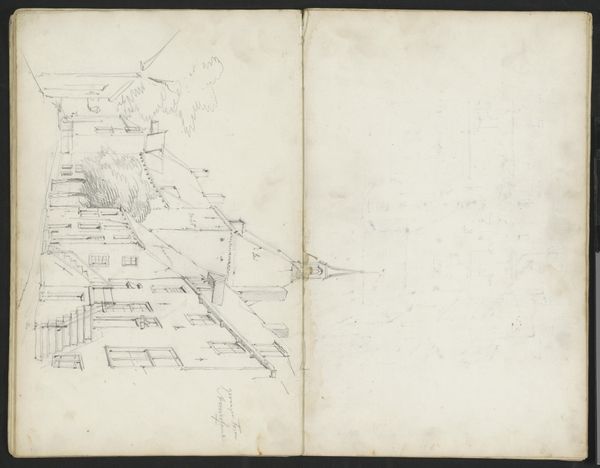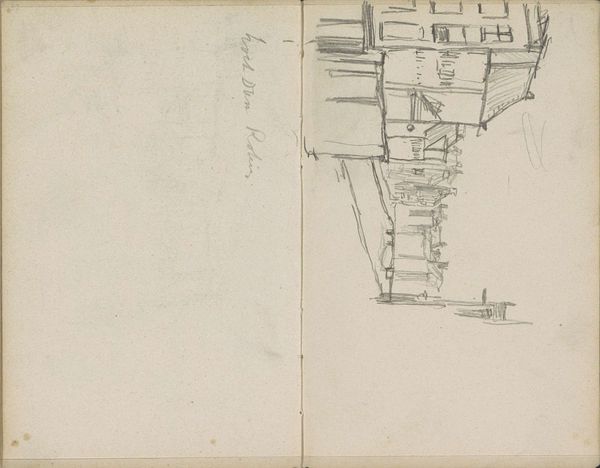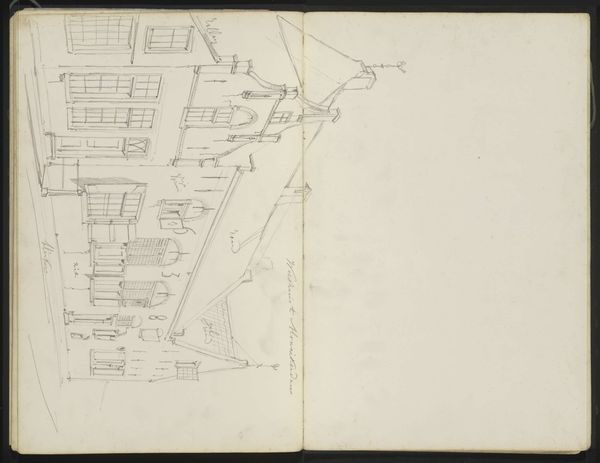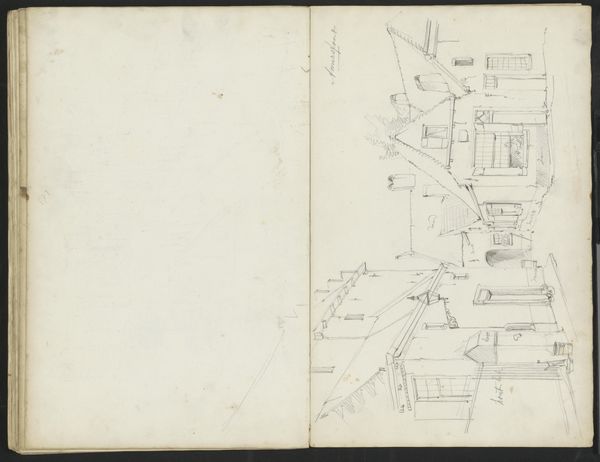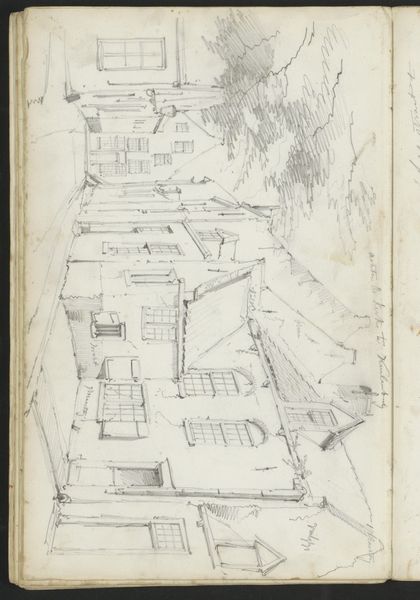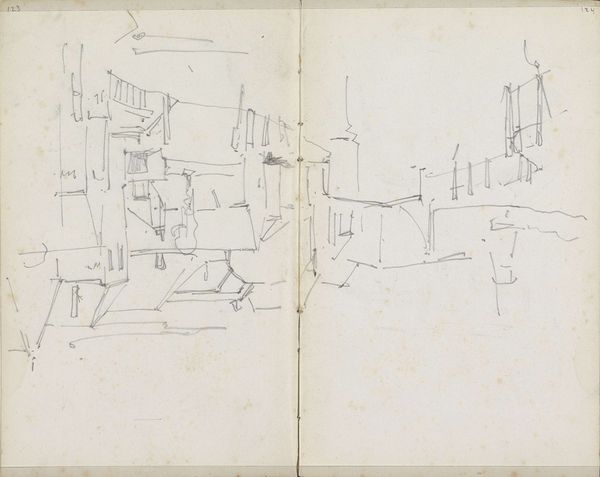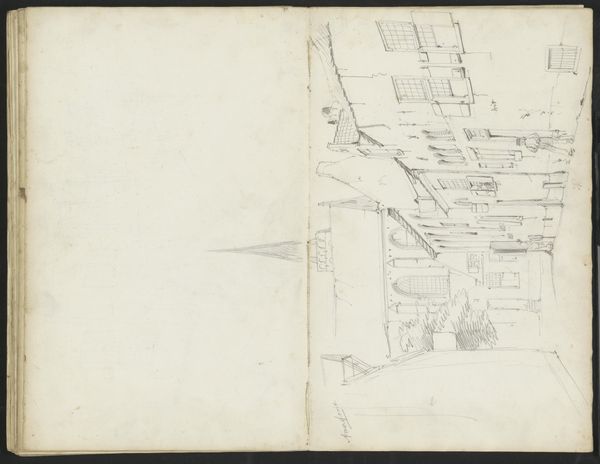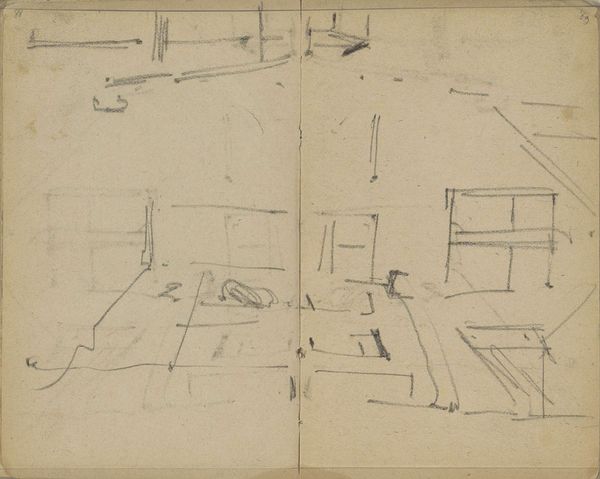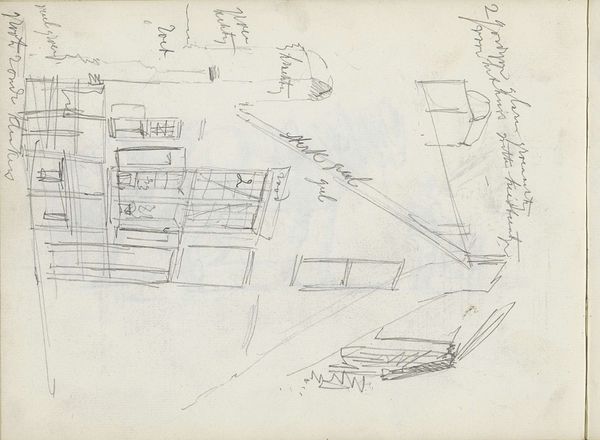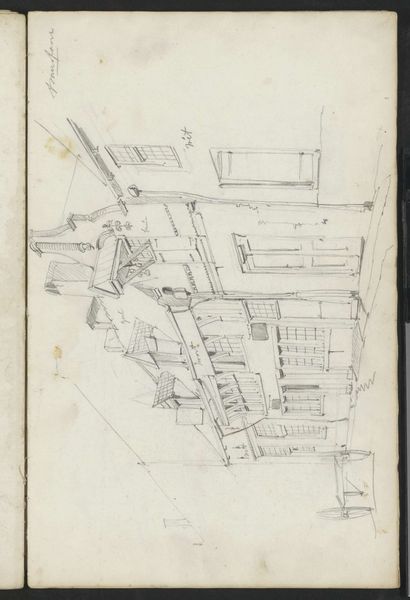
drawing, pencil
#
drawing
#
dutch-golden-age
#
pen sketch
#
sketch book
#
landscape
#
personal sketchbook
#
sketchwork
#
ink drawing experimentation
#
pen-ink sketch
#
pencil
#
pen work
#
sketchbook drawing
#
cityscape
#
storyboard and sketchbook work
#
sketchbook art
#
realism
Copyright: Rijks Museum: Open Domain
Curator: This is Willem Koekkoek’s "Street View with Figures and the Grote Kerk in Vianen," a pen and pencil drawing estimated to have been made sometime between 1849 and 1895. It resides in the Rijksmuseum collection. Editor: There’s an airy, almost unfinished quality to it. The perspective is striking; it feels like a captured moment rather than a grand architectural statement. Curator: Precisely. It’s an interesting artifact, because as a sketch, it showcases Koekkoek’s process. Note how the medium of pen and pencil enabled a portability that likely lent itself to on-site creation. How does that inform its realism, do you think? Editor: The realism here is achieved through linear precision—look at how the artist has depicted the buildings’ facades and their fenestration. He creates depth by subtly varying the stroke’s weight and concentration. It is a masterclass in tonal modelling using humble material. Curator: And look at the suggestion of labor. The sketch feels unpretentious, direct. It evokes a very particular aspect of 19th-century artistic practice, before mass tourism really exploded. Editor: I appreciate your consideration of that historic moment; still, my immediate reaction isn't towards the artwork's socio-economic environment. My concern lies with the structural relationships established on this page, from how lines converge to its two-page composition. I would say the negative space it creates guides the viewer's sight effectively to its principal focus, the Great Church of Vianen. Curator: I see it as evidence of the burgeoning middle class, people having both leisure time and disposable income for such representations of their towns. The artist wasn’t just depicting; he was also selling and, of course, participating in the construction of bourgeois identity. The drawing’s production becomes quite fascinating. Editor: You have a valid perspective, without ignoring the formal considerations behind Koekkoek's process. It would be intriguing to delve further into the intricacies of light and shadow play, which greatly contributes to a sense of authenticity, or examine how lines suggest form and material… Curator: Absolutely. This drawing gives us more than simply aesthetic fulfillment; it presents tangible hints for tracing the links that bind artistic work and the society that gives meaning to them. Thank you for that astute consideration!
Comments
No comments
Be the first to comment and join the conversation on the ultimate creative platform.
